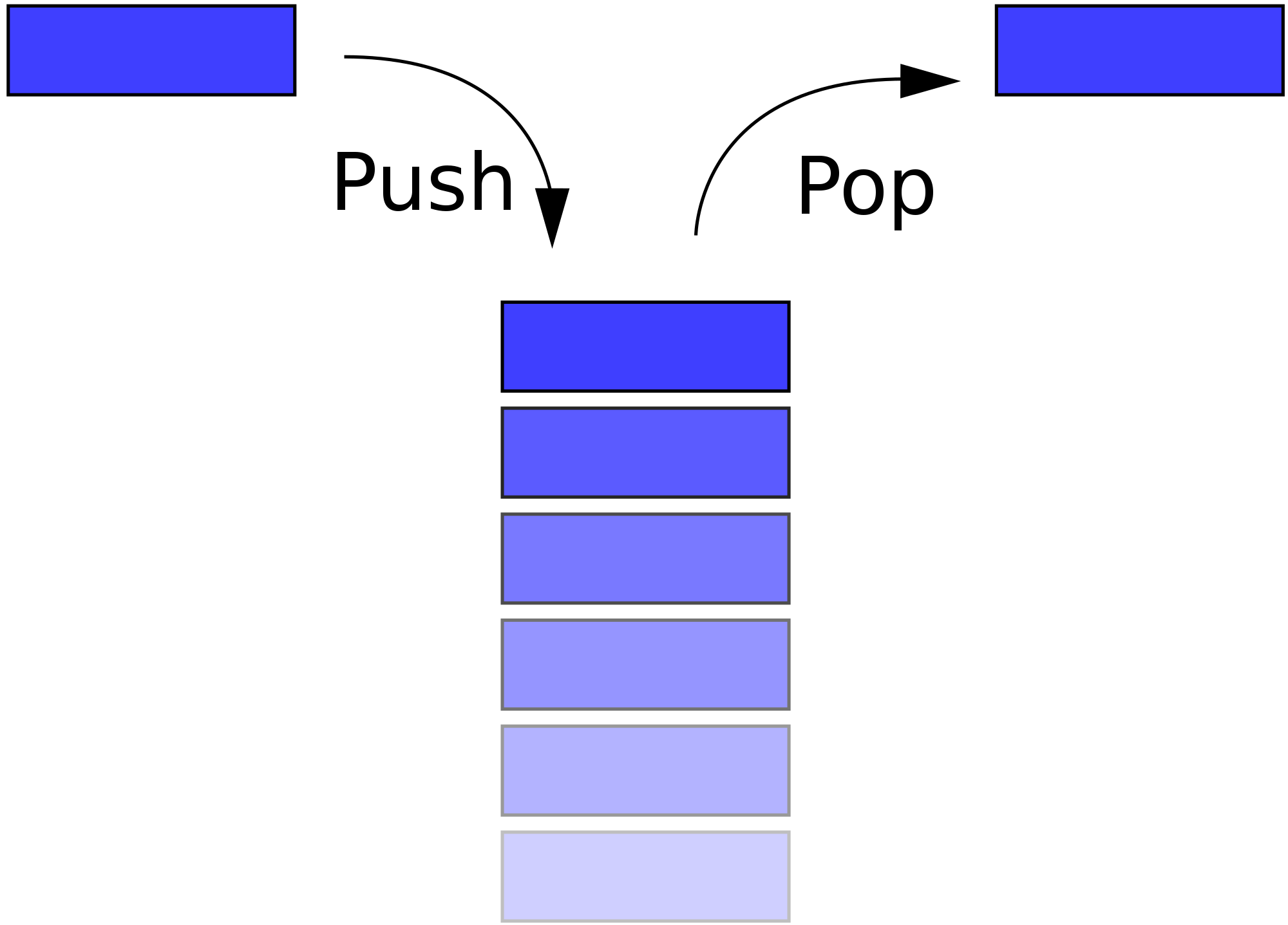This workshop is important because:
There are a handful of common ways we want to organize data. Sometimes we want data to be easily accessible no matter what index or key it lives at (array or object/hash/dictionary). Sometimes we want data to be organized in such a way that it is easy for the computer to store it without making a lot of space available ahead of time (linked list). In the case of stacks, we want to maximize the efficiency of adding an element to the one end and returning an element from that same end.
After this workshop, developers will be able to:
- Describe a stack by its methods and last in, first out (LIFO) behavior.
- Work with stacks (as linked lists or arrays).
Before this workshop, developers should already be able to:
- Describe and manipulate a linked list.
- Describe and manipulate an array.
- How is a deck of cards similar to a linked list?
- How is a deck of cards similar to an array?
- What is the benefit of a linked list over an array?
Stacks and queues are two commonly used data structures. You can read about them below or watch this video. Note that all the operations mentioned in the video take O(1) time.
Stacks as a data structure are a lot like stacks as a physical structure. Think of stacks of dishes or books. We can remove an item from the top of the stack (by poping), or add an item to the top of the stack (by pushing it). While we may be able to Jenga stacks of real world objects, the data structure only allows us to manipulate the top item of the stack. The push and pop operations for a stack are both O(1) - constant time. Some stack implementations also allow us to peek at the value of the top item without actually poping it off of the stack.
Stacks are "Last In, First Out" -- the last item pushed on top of a stack will be the first thing popped off of the stack.
Don't you dare pop from Jimmy's stack of pancakes.
-
What are some real life structures or objects that a stack could simulate well?
-
Draw a stack after each of the following operations:
- PUSH 0
- POP
- PUSH 2
- PUSH 4
- PUSH 6
- POP
- PUSH 8
click for answer
* start []
* PUSH 0 [0]
* POP []
* PUSH 2 [2]
* PUSH 4 [2, 4]
* PUSH 6 [2, 4, 6]
* POP [2, 4]
* PUSH 8 [2, 4, 8]
- Stacks and queues are often implemented with linked lists. Think about how you'd use a linked list to make a stack. Where will you put the "top" of the stack? How would you add something to the top the stack? How would you take something off?
super stuck? click for an answer...
> The "top" could be the head of the linked list. You could use `prepend` to `push` something onto the top. You could `delete` the list's head and return it to `pop`.- It's also pretty natural to use arrays for stacks given the built-in methods we have access to in JavaScript. So, let's think of arrays. Where would you put the "top" of the stack? How would you add something to the top the stack? How would you take something off?
super stuck? click for an answer...
> The "top" could be the end of the array, and you could use array methods `push` and `pop`. Thanks, JavaScript!- Stretch: How would you implement a stack with a fixed-size array?
Would you use a stack or a queue to...
-
... print out a list of instructions that must be done in order?
-
... allow a user to undo changes to a document, one by one?
-
... let users create playlists and play back the songs?
-
... display only the 10 most recent messages a user posted, in the order they were posted?
- The Call Stack
Most programming languages rely on something called the "call stack," especially for recursion. The call stack keeps track of function calls that are in the process of executing. When a function is called, it's pushed onto the call stack. When the function returns, it's poped off of the stack.
Here's a recursive factorial function:
function factorial(num){
if (num > 1){
return num * factorial(num-1);
} else if (num === 1 || num === 0){
return 1;
} else {
console.log("can't do factorial of this number!");
return undefined;
}
}
factorial(3);
// => 6Write out the full call stack for factorial(3) at each step in the function's execution.
- Stretch: Try out this stack challenge, an epic battle for correct code!


